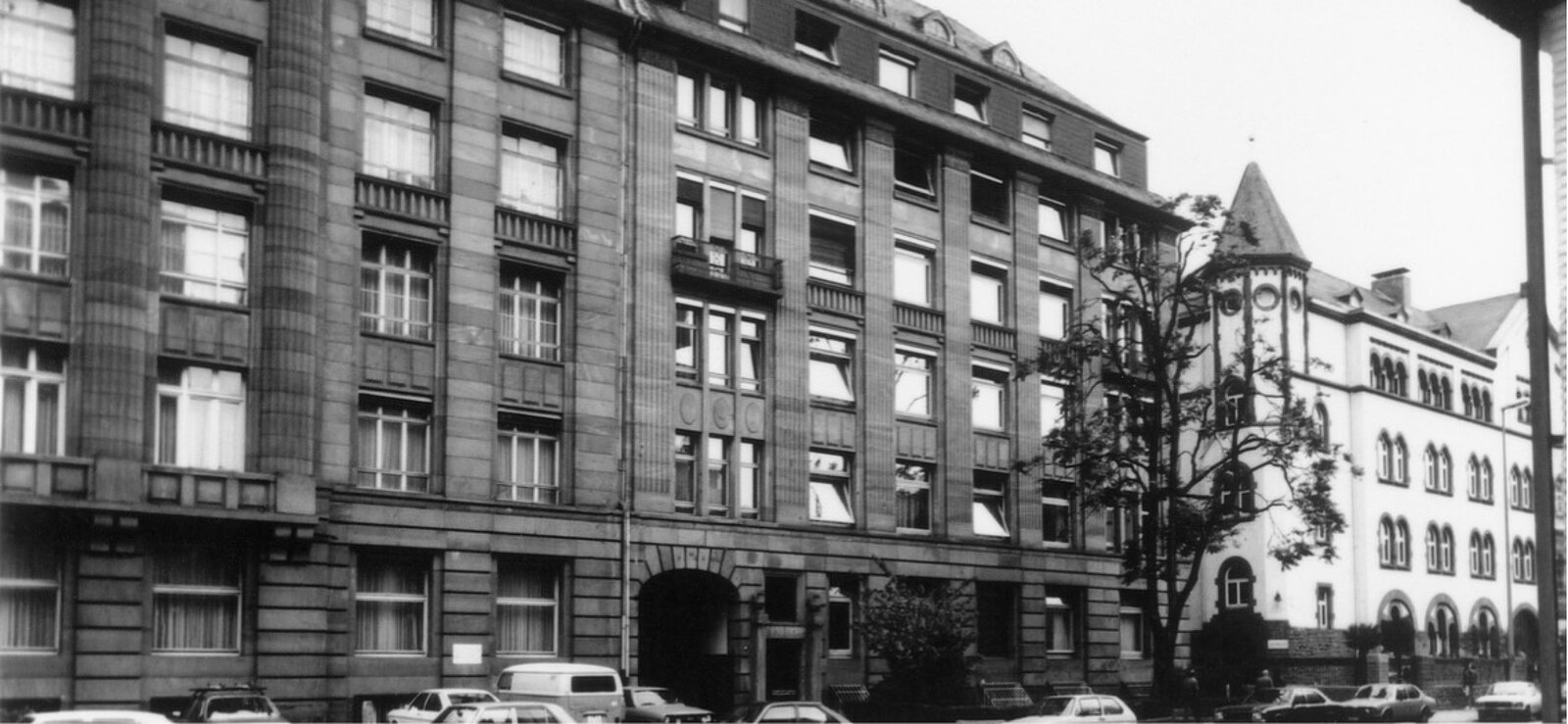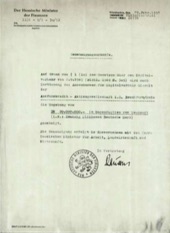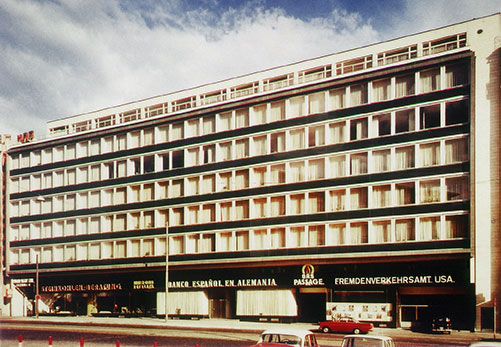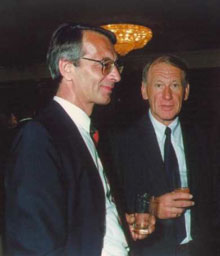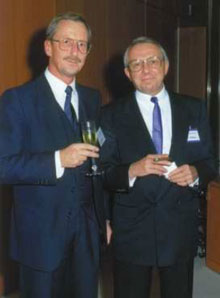AKA's history
AKA company foundation
On 28 March 1952, the large commercial banks, the major regional and public-sector banks as well as the leading private banks in Germany established a syndicate. Under the management of Rheinisch-Westfälische Bank Aktiengesellschaft, Düsseldorf (one of the three precursors of the present-day Deutsche Bank AG), they founded Ausfuhrkredit-Aktiengesellschaft in Frankfurt am Main or “AKA” for short. The initiator was Oswald Rösler, a member of the Management Board of Rheinisch-Westfälische Bank AG.
1960
From supplier to buyer credit
During AKA’s early days, long-term trade receivables were increasingly exerting pressure on exporters’ balance sheets. This prompted a search for forms of finance capable of easing this strain. Exporters were also looking for ways of transferring the unsecured risks arising from supplier credits to third parties as far as possible. This particularly applied to the exporter’s internal financing ratio. Conditions in the global capital markets improved at the beginning of the 1960s. Sufficient credit was available in the domestic economy, while the international situation stabilised. Forfeiting business surged. In this way, exporters were able to sell part of their trade receivables to ease the pressure on their balance sheets.
An innovative idea of changing the availability of credit took hold: expert finance was now granted directly to the foreign buyer or its bank. This buyer or tied credit alleviated the exporter of the need to provide finance by separating the delivery transaction from the finance transaction.
1961
Move to a new address in Grosse Gallusstrasse 1-7
The Main-Gas building in Grosse Gallusstrasse 1-7 has been AKA’s home ever since it was built in 1961. With its clearly structured facade, the building is a classic example of the Frankfurt post-war era. In 2016, the facade was listed as historical heritage.
Shareholder base extended
The visible successes arising in the first few years after AKA’s establishment aroused the interest of other banks that had not previously been shareholders. In 1966, AKA’s shareholders decided to admit 13 clearing banks and a further 15 commercial banks, including the present-day SEB Bank and the present-day DZ-Bank.
The bank’s current name “AKA Ausfuhrkredit-Gesellschaft mbH” also goes back to 1966. The decision to convert the bank from an “AG” to a “GmbH” was prompted by the new Joint Stock Companies Act of 1965. As a result, the number of positions on the Supervisory Board was substantially limited, providing the decisive impetus for renaming the bank.
1976
Hermes Reform: Breakthrough for tied buyer credits with a five-per cent alternative
Previously, forfaiting and buyer credits had played only a minor role in German commercial banks’ export finance business. It was not until the Hermes reform of 1976 that buyer credits became a success. Now it was possible to disburse such loans on a pro-rata basis according to delivery or performance and to have the banks retain the deductible of five per cent. This marked a major step forward for exporters.
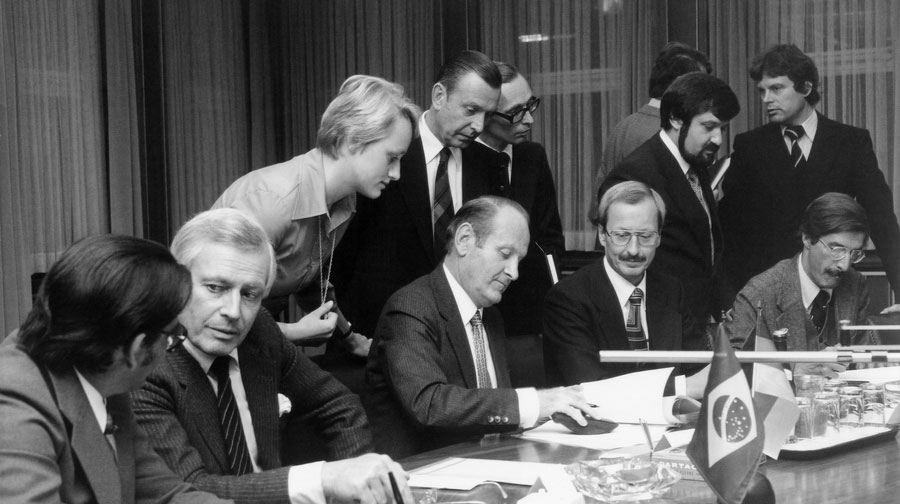
OECD consensus introduced
In this agreement, the OECD member states undertook to observe certain minimum standards in government-supported export credits with terms of over two years. This also includes the German Federal Government’s Hermes-covered export credit guarantees. The purpose of this consensus is to prevent an international subsidy spiral in which individual countries give their exporters competitive advantages by granting export credits financed by public subsidies.
End of the 1970s
AKA develops basic and master agreements
Since this period, AKA has entered into basic and master agreements with numerous foreign banks concerning medium and long-term finance for export transactions. These contain standardised provisions applicable to all the individual loan contracts entered into on this basis. The individual loan contracts merely contain a brief description of the export transaction in question. The advantage for the exporter is that both the individual loan contracts can be concluded and the conditions for disbursement of the loan can be satisfied more quickly. These contracts have been providing exporters with a more efficient avenue for signing loan contracts since the end of the 1970s.
Expansion of scope for business
With the dawning of the new millennium, new approaches were taken concerning cooperation with customers and partners: AKA widened its scope for granting buyer credits on its own behalf and at its own risk.
After realigning its business, AKA offered further facilities and services:
- Finance on CIRR terms (commercial interest reference rate)
- Finance under the cover provided by other European export credit agencies (multisourcing)
- Provision of services in connection with rescheduled loans
From today’s perspective, it is clear that financing under the cover provided by other European export credit agencies marked the first step in AKA’s journey towards becoming a European trade finance institution.
KfW-IPEX Bank GmbH admitted as a shareholder
KfW IPEX-Bank became one of AKA’s shareholders in 2011. AKA handles the ERP export finance program for KfW as the representative of the German Federal Government. In addition to the funding which is available to all participating banks, KfW provides AKA with a separate CIRR funding facility. Within this facility, finance of up to EUR 20 million may be requested for export transactions.
2017
AKA opens up to non-shareholder banks
AKA supports its expansion course with a broader scope for acting on business opportunities in the current market environment. A firm element of its strategy is customer protection. This means that AKA operates as a supplementary institution for banks in the area of export finance. While retaining the existing cooperation with its shareholder banks based on a spirit of mutual trust, AKA has additionally been offering its range of services to all banks since 2017.
More information concerning our cooperation with banks can be found here.
